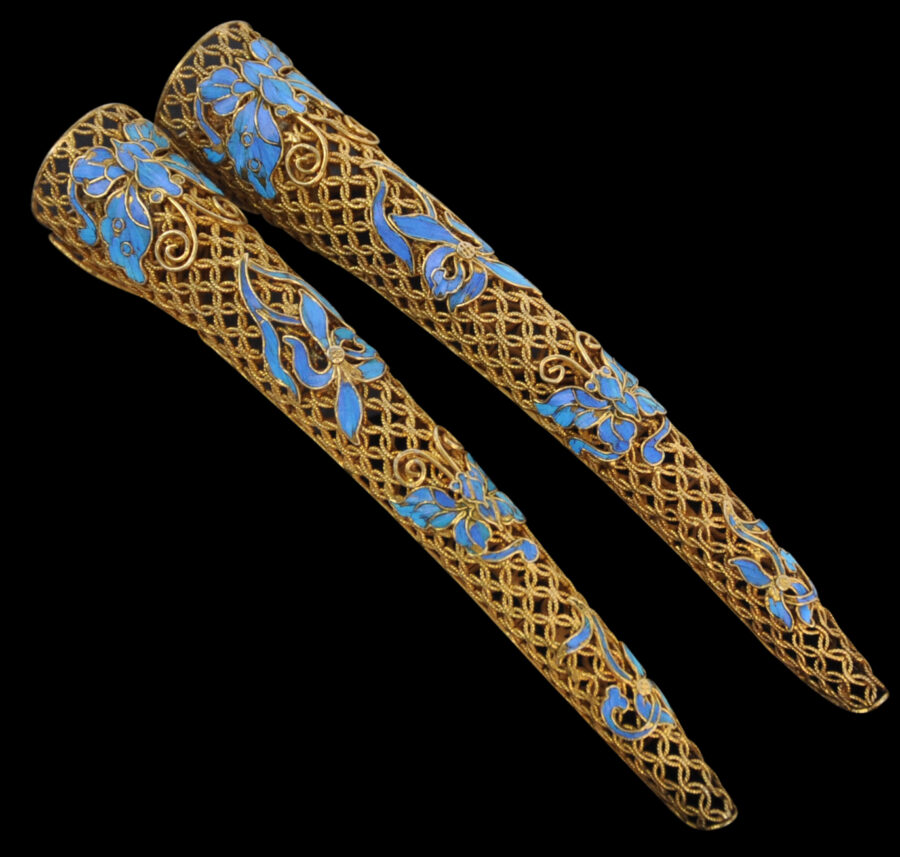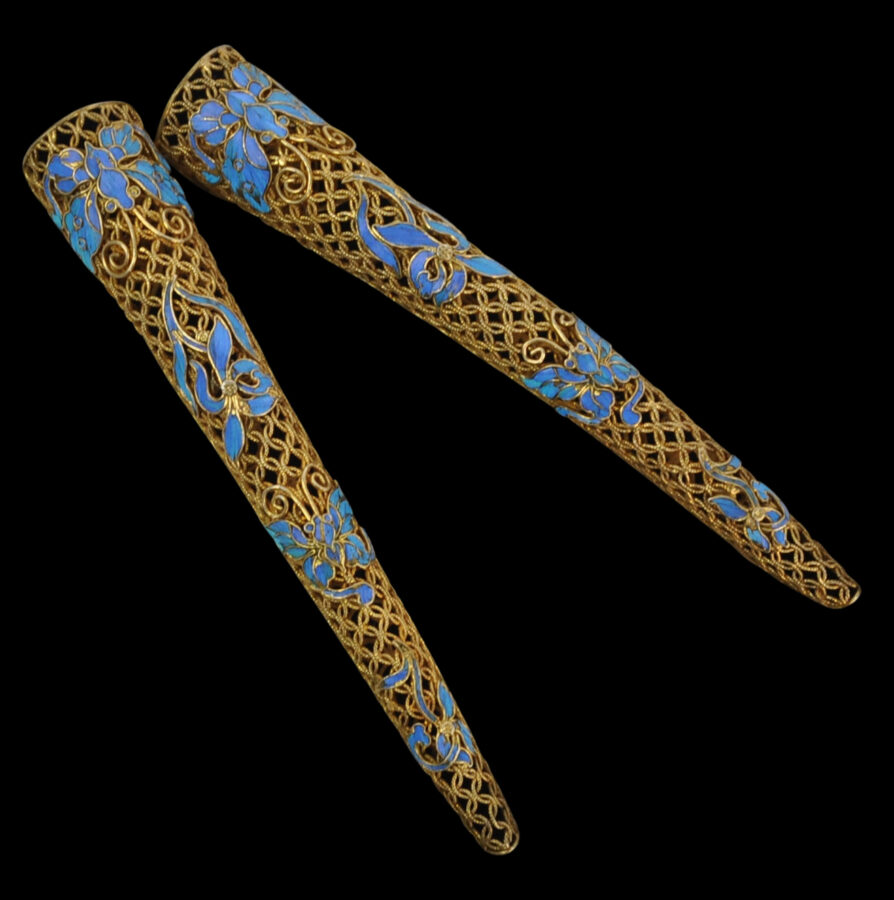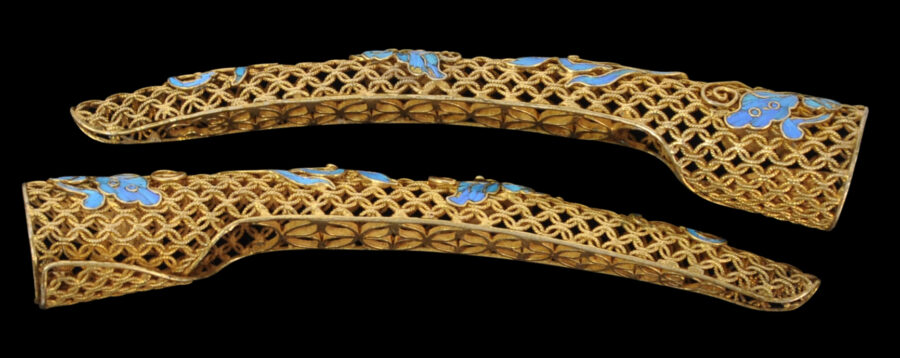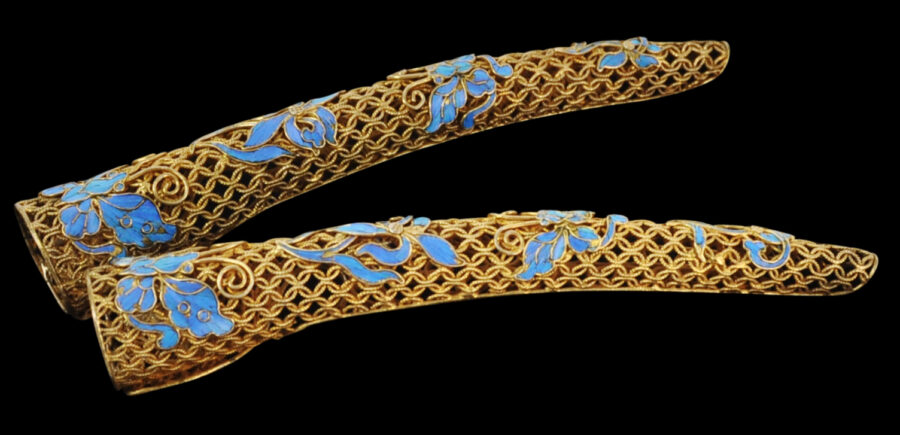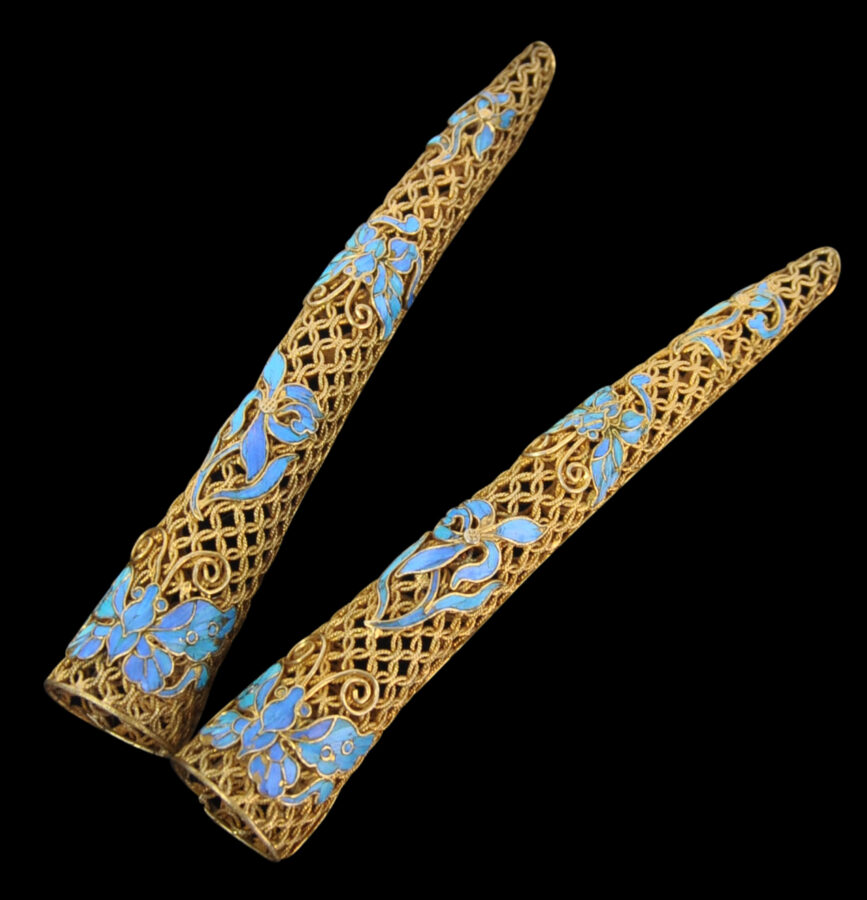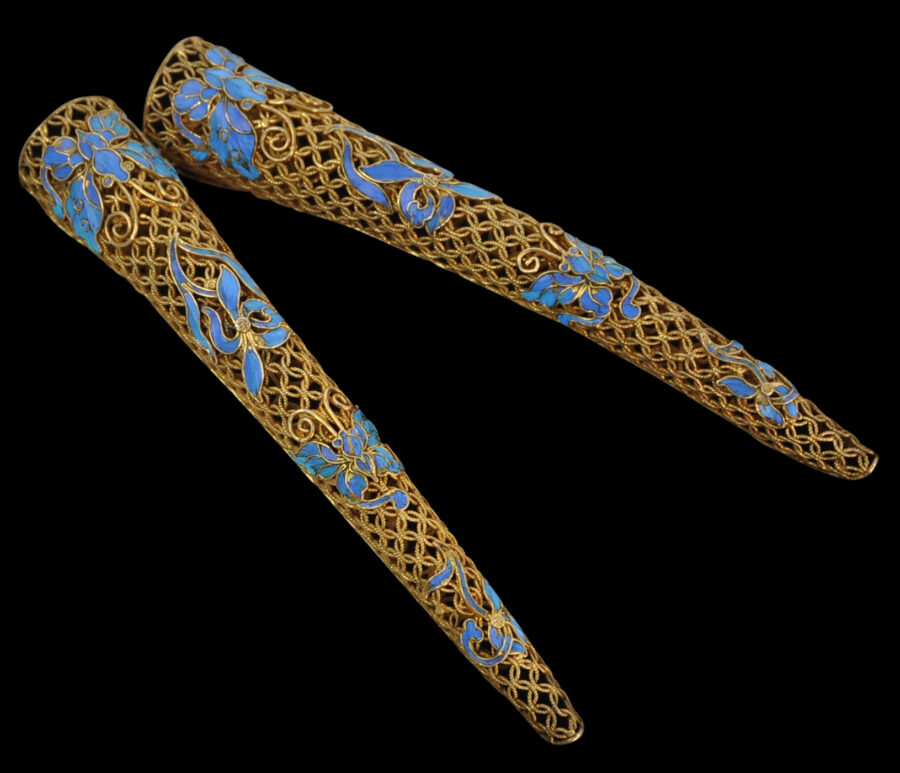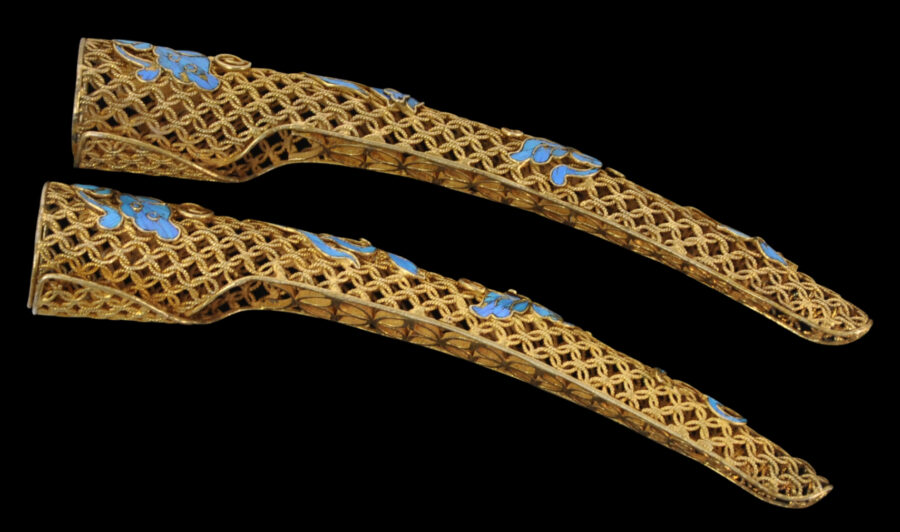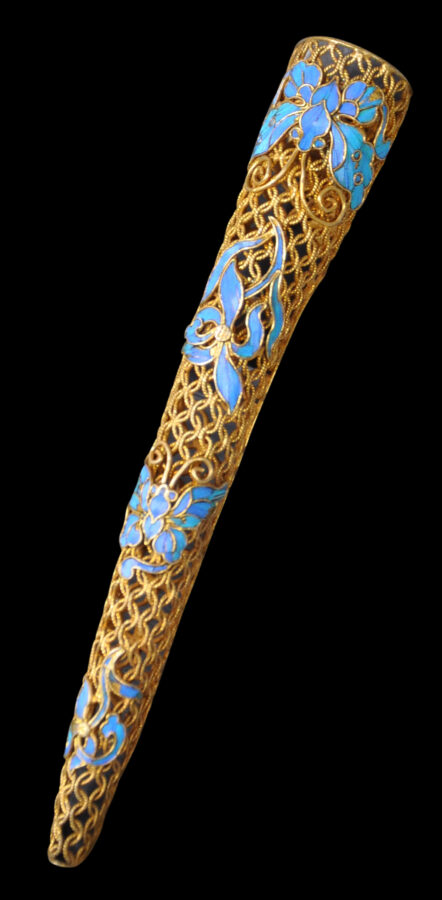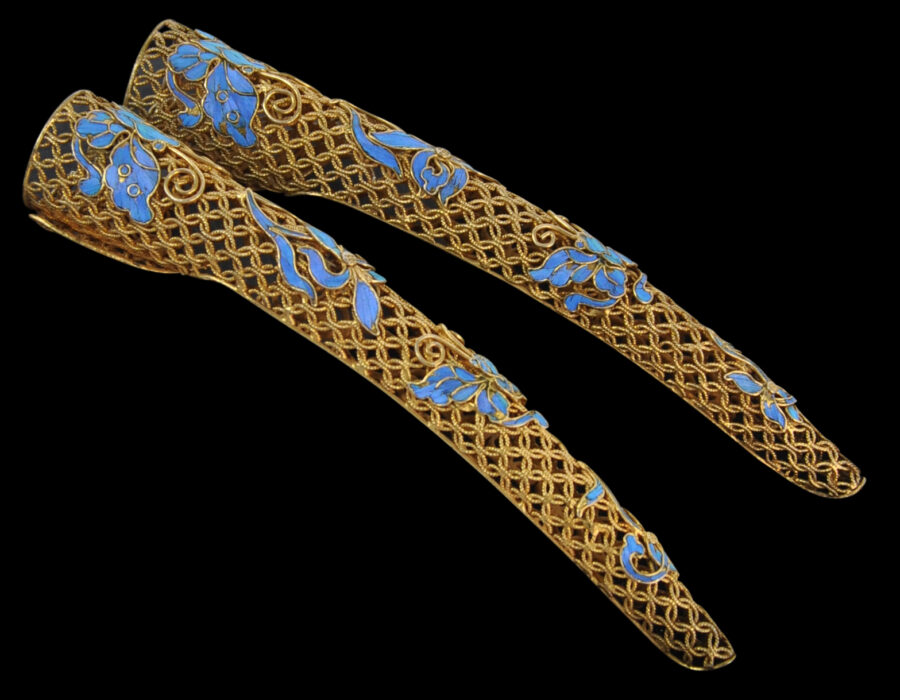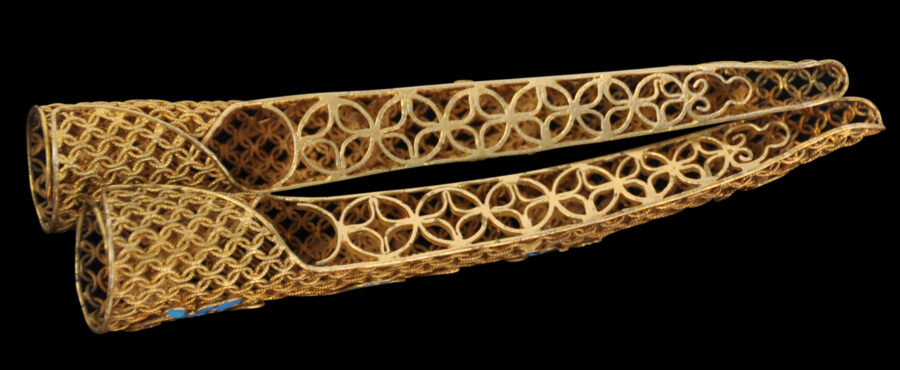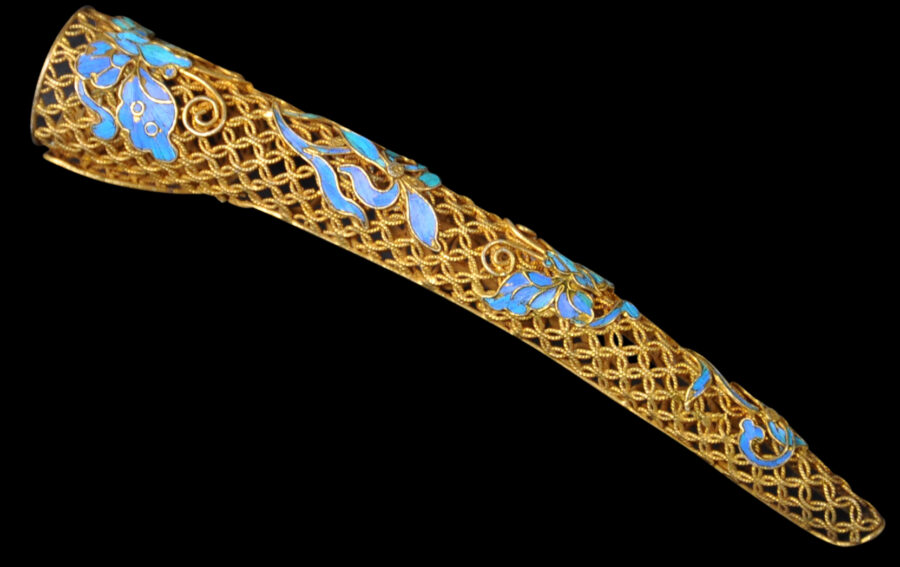Enquiry about object: 7030
Pair of Imperial Gilded Fingernail Guards set with Kingfisher Feathers, Belonging to Dowager Empress Cixi (慈禧)
Beijing, China 19th century
length of each: 9.5cm
Provenance
estate of Werner Forman (1921-2010); acquired in Beijing in the 1950s; Imperial Collection.
This fine pair of fingernail guards was once owned by China’s Dowager Empress Cixi (慈禧).
The pair is of gilded (gold-plated) silver the bodies of which are comprised of the Chinese ‘cash’ motif in delicate filigree arrayed in trellis form. Each is further decorated with butterfly and orchid motifs in blue. The blue has not been achieved with the use of enamel but by carefully attaching segments of blue kingfisher feathers.
The fingernail guards are from the estate of Werner Forman (1921-2010) and are illustrated in colour in the book The Dragon Empress: Life and Times of Tz’u-hsi 1835-1908 – Empress Dowager of China (1972) by Marina Warner, with the caption ‘Nail protectors, inlaid with kingfisher feathers, and worn by Tz’u-hsi [Cixi] over her six-inch long nails’.
Werner Forman was a famous Czech photographer who developed an interest in Chinese art and published many books on the topic for which he did the photography. His photography impressed the Chinese authorities and in 1956 he and his brother were invited to spend two months visiting museums in China and to hold seminars for Chinese photographers. In 1962 the People’s Art Publishing House in Beijing published a volume of 268 full-page photographs taken by Werner Forman in ten museums, with captions in Chinese, English and Russian. It was during this time that Forman is believed to have acquired the pair of fingernail guards, possibly as a gift from an official.
The Imperial provenance of these nailguards is further testified to by a very similar gilded silver and kingfisher pair now in Taipei’s National Palace Museum which are from the Ching Dynasty imperial collection and which were exhibited in the Museum’s 1986 exhibition of Ch’ing Dynasty Costume Accessories, and illustrated in Chen (1986,p. 272). This pair is almost identical to the pair here in terms of conception and construction. The fact that they are gilded (wearing ‘yellow’ was an imperial prerogative) also suggests the royal provenance. The Dowager Empress promoted the fashion for long nails and elaborate nail guards. She is said to have had almost 600 silk-lined trays filled with jewellery shelved along a wall in a room that adjoined her sleeping chamber in the Forbidden City (Jackson, 2001, p. 133).
The use of kingfisher feathers to decorate ornaments in China was a practice that continued for centuries. The best feathers were sourced from Cambodia and it is believed that at least some of the wealth that led to the construction of Angkor Wat in Cambodia came from the kingfisher feather trade with China.
The fingernail guards here are in excellent condition with only very minor, barely discernible losses to the kingfisher feather inlay.
Note: A copy of The Dragon Empress will be provided with the nail guards.
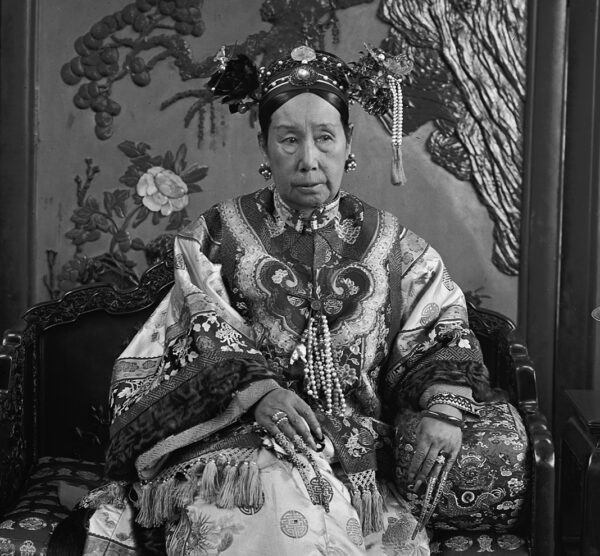
Empress Cixi, who loved sitting for the new technology of photography, is seen here (circa 1903) wearing two pairs of especially long fingernail guards.
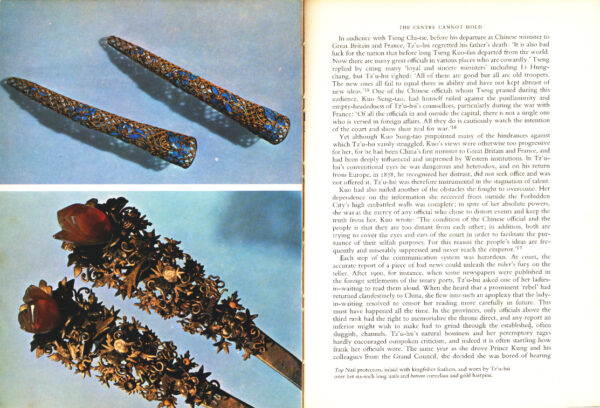
The nail guards as published in 1972.
References
Chen, H.S. et al, Catalogue of the Exhibition of Ch’ing Dynasty Costume Accessories, National Palace Museum, 1986.
Jackson, B., Kingfisher Blue: Treasures of an Ancient Chinese Art, Ten Speed Press, 2001.
National Palace Museum, Royal Style: Qing Dynasty and Western Court Jewellery, 2012.
Warner, M., The Dragon Empress: Life and Times of Tz’u-hsi 1835-1908 – Empress Dowager of China, Cardinal, 1972.


